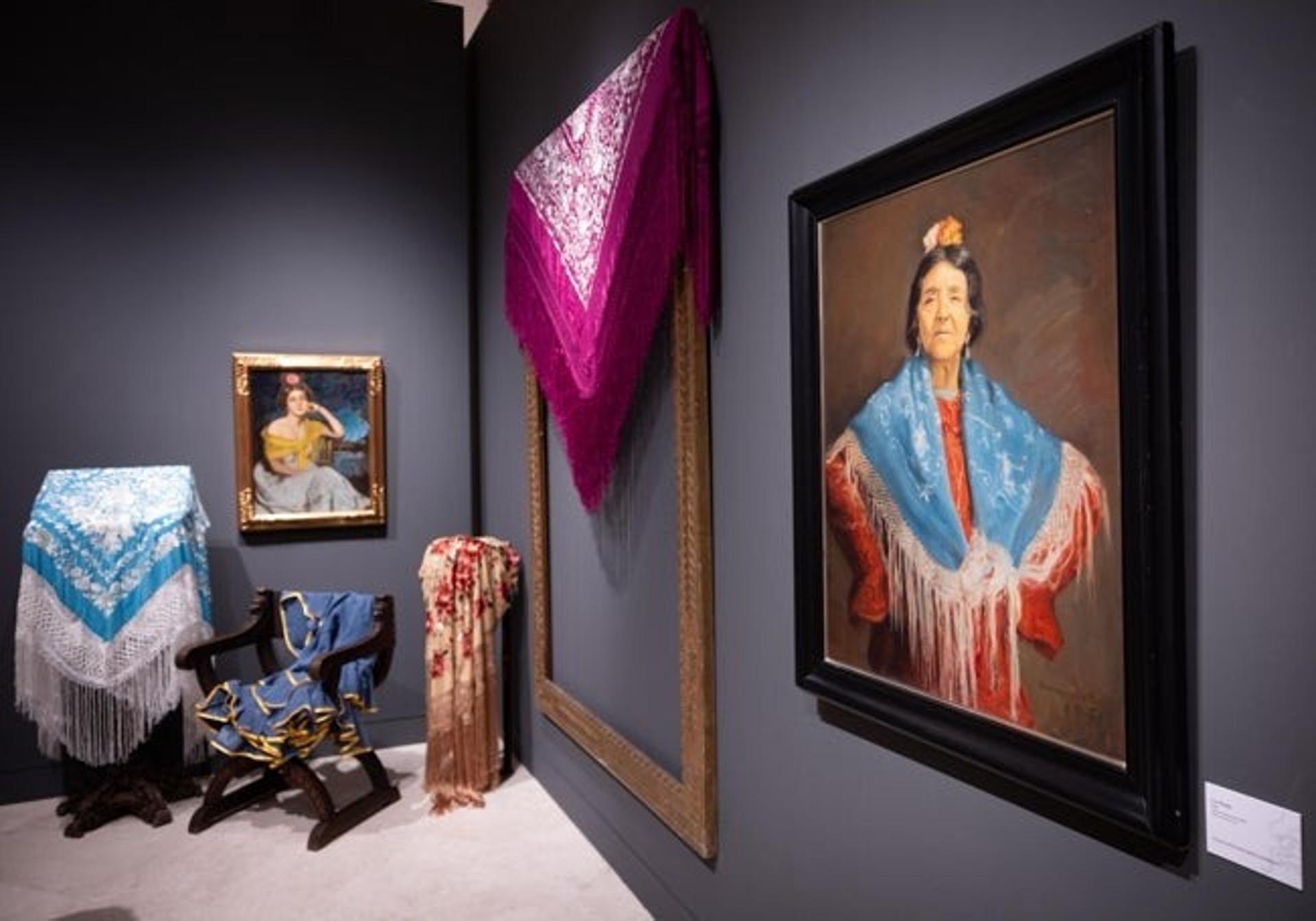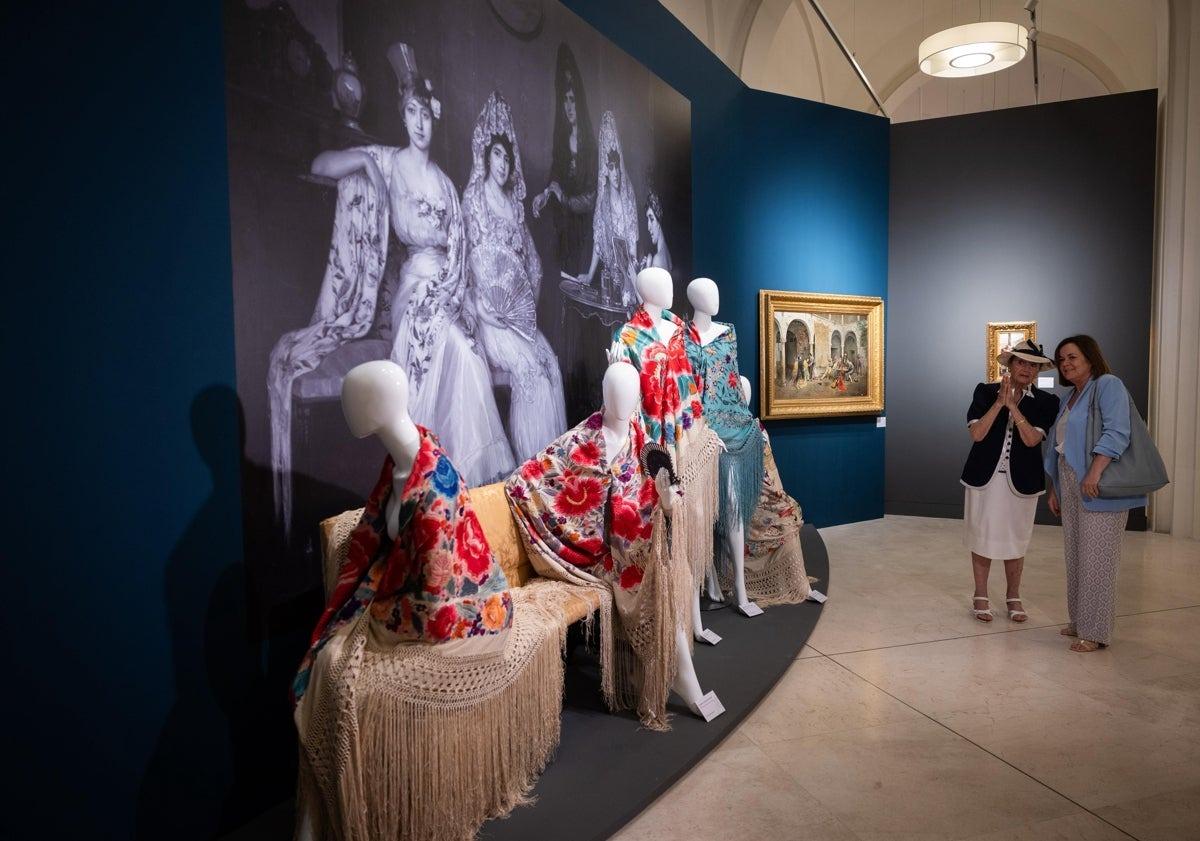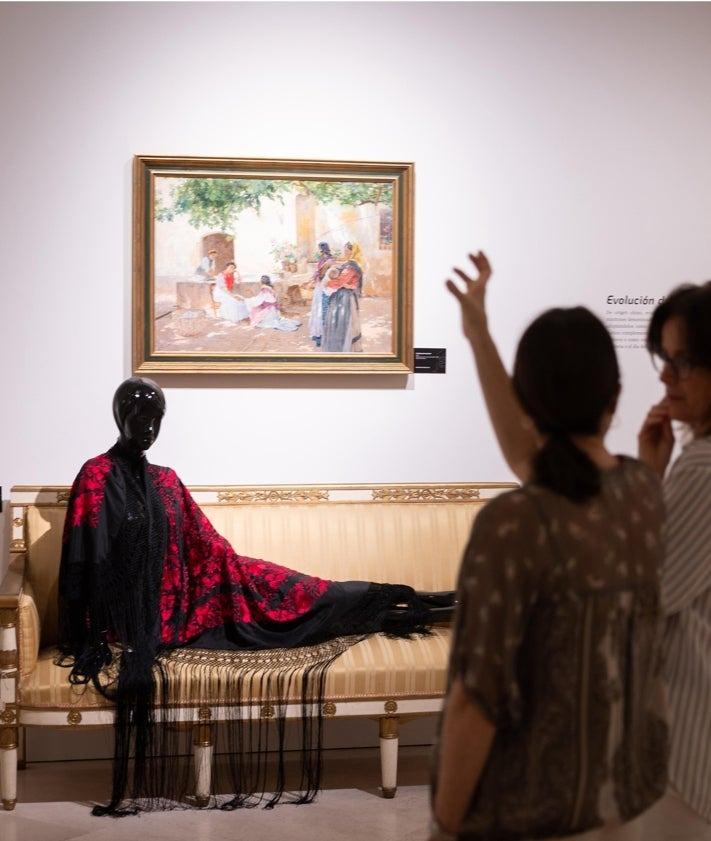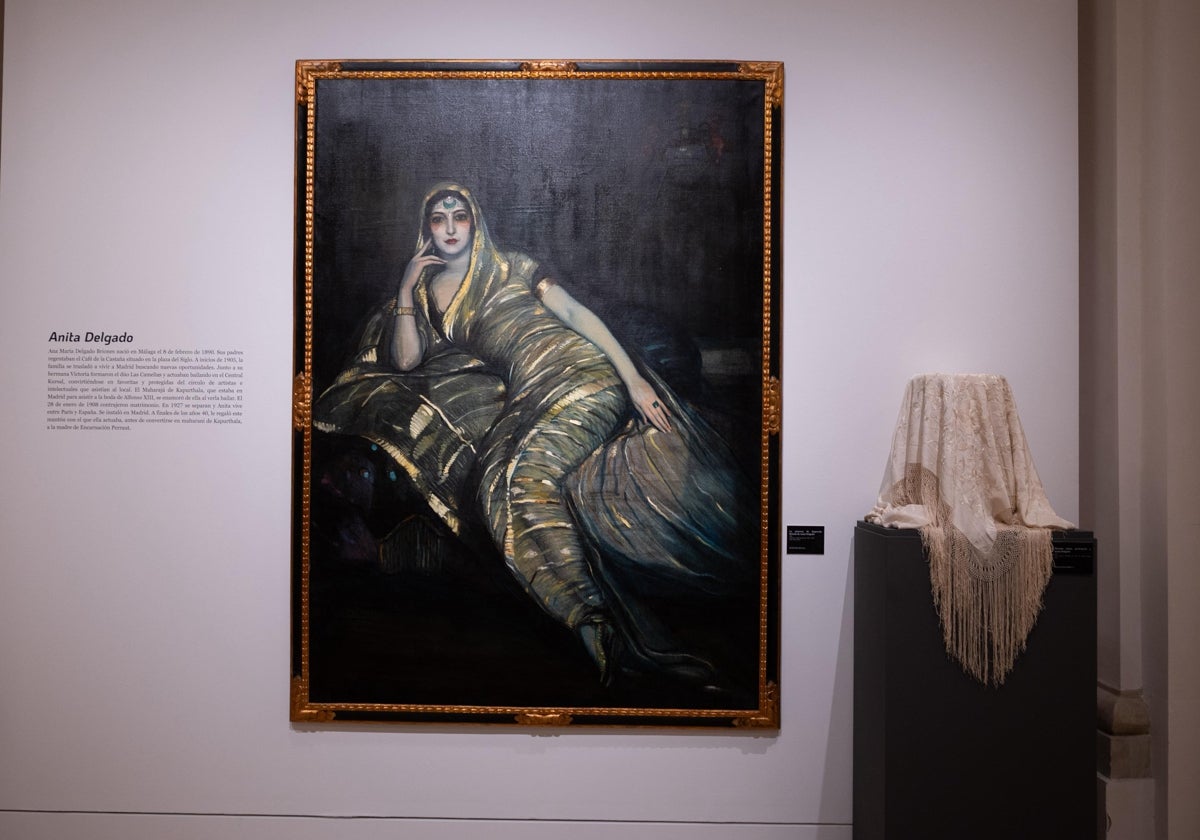Anita Delgado's shawl and other historic silk garments, displayed in Malaga Museum
The exhibition traces the origins of the Manila shawl and its popularity in the Spanish-speaking world since the beginning of the 19th century, supported by the Perraut collection
The painting of Anita Delgado dressed as a maharani with rich fabrics wrapped around her body and head is always fresh in our memory. This is how she was portrayed by Federico Beltrán Masés in Paris in 1919 in a famous painting that is part of the Malaga Museum collection, found in the La Aduana building. But before becoming the wife of the maharajah of Kapurthala, Anita was a talented dancer, a Malaga native deeply rooted in the flamenco traditions of her home town, which always remained close to her heart.
At the end of the 1940s, in her mature years, separated from her husband and settled in Madrid, Anita Delgado gave away one of the Chinese shawls with which she performed in her youth. It was gifted to the mother of Encarnación Perraut, owner of an amazing collection of shawls that is now on display in La Aduana.
The museum of the Junta de Andalucía travels back in time to the first third of the 19th century to retrace the history of one of the most popular items of women's clothing in Spain and Latin America. The exhibition layout places pieces in their context, with paintings and period furniture. The museum exhibits a selection of 41 shawls and other items from the Perraut collection, on loan from Encarnación Perraut and her son Jesús Burgos Perraut.

El Mantón de Manila: Colección Perraut, curated by Dolores Vargas, provides an insight into the history, embroidery techniques, designs and iconography of these scarves that form part of the Spanish consciousness. Curiously, their name does not refer to the place of origin - these silk-embroidered garments came from Chinese region of Canton. Instead the name reflects the place of distribution, through which all oriental commercial traffic passed, the capital of the Philippines.
There is a wide variety of shawls, all of them are featured in this exhibition. There are 'fly-wing' shawls, the original ones, made of very fine silk and named due to their brownish black colour. Later, the chinoiserie ones proliferated, full of traditional Chinese scenes, with fringes taken from the same fabric and macramé. Later, in the last third of the century, came Elizabethan shawls and pieces enriched with appliqués of Chinese faces in ivory, mother-of-pearl, porcelain or silver.
Hispanics and Spaniards
The collection also includes examples of Hispanic shawls, made in Lima, Chile or Panama to avoid the high prices of the Chinese garments. They never matched the originals; they were huge, with enormous flowers embroidered on thick silk, surrounded by exaggerated fringes. Although these were in great demand in South America, the Chinese shawls remained the favourite in Spain.
Some were embroidered directly in Spain, reflecting national tastes and customs. Spanish folklore adapted the shawl as an integral piece of clothing, evolving into the small shawls of the flamenco dress, such as the one worn by La Paula in her portrait by Antonio Montiel (1964). But they were also worn by the chulapas (traditional working-class women from Madrid) and were introduced to the regional dress of Extremadura, Castile, Aragon and Valencia.



Alongside the garments, the exhibition also features furniture and objects which carry the Chinese theme and others related to the packaging and transport of the shawls, all from the Perraut collection. For example, there is a suitcase and three original boxes used to pack the shawls for transport during the 19th century; a lacquered wooden screen from the 20th century; a polychrome porcelain vase; and various pieces of jewellery.
The Malaga Museum also contributes historical furniture from its collections and paintings such as the one of Anita Delgado; Después de la Corrida by Denis Belgrano (1885- 1890); Gitana by Gonzalo Bilbao (c. 1900); La Buenaventura by Enrique Simonet (1915); the terracotta Bailaora (anonymous, 20th century); and the sculpture Pequeña Madre by F. González Macías (1961).
The exhibition, which is part of a commitment to revisit heritage and highlight Andalusian culture, is open until 20 July during the museum's usual opening hours: Tuesday to Saturday from 9am to 9pm; Sundays and public holidays from 9am to 3pm.



Comentar es una ventaja exclusiva para registrados
¿Ya eres registrado?
Inicia sesiónNecesitas ser suscriptor para poder votar.